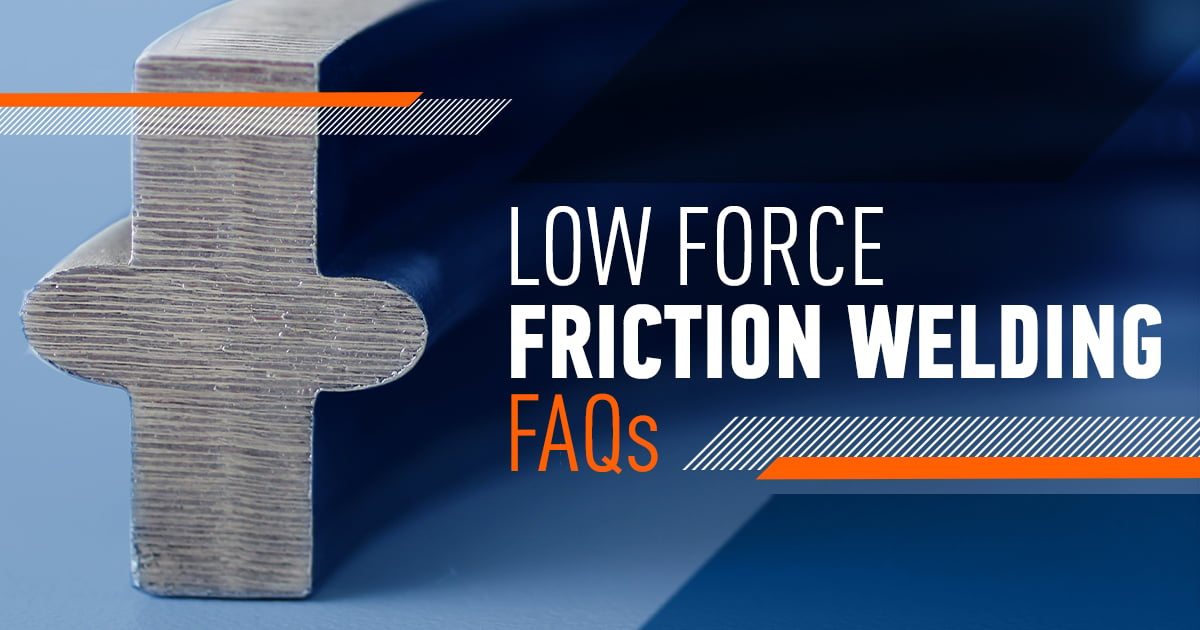
It's our newest technology and has the potential to revolutionize solid-state joining as we know it - Low Force Friction Welding is here to stay and since its inception, we've learned a lot about its potential in all of the industries that MTI serves.
As more people discover that Low Force could be a superior solution over traditional Friction Welding or other joining methods, we have noticed a trend surrounding the curiosity about our new technology.
In this blog, we will answer some of the most frequently asked questions about Low Force Friction Welding — but first, let's talk about how we define it.
Low Force Friction Welding uses an external energy source to raise the interface temperature of the parts being welded, reducing the process forces required to make a solid-state weld compared to traditional Friction Welding. This process applies to both Linear and Rotary Friction Welding.
MTI is the only company in the world to have developed, designed and manufactured Low Force Friction Welding machines operating in industry today. Even though this technology is still relatively new, MTI has already built 13 Low Force Friction Welding machines for production.
Why would I make the switch to Low Force Friction Welding over traditional Friction Welding?
Some of the main advantages of Low Force Friction Welding happen to be the top reasons you may consider Low Force over traditional Friction Welding. While both processes produce strong, solid-state joints, nearly every benefit of traditional Friction Welding is maximized with Low Force.
To start us off, here are three key examples:
Smoother Flash: In Low Force Friction Welding, the flash is formed as a smooth bulge instead of a pair of curls, as seen in traditional Friction Welding. In many cases, Low Force can achieve welds with little to no loss of length (upset). Easier and faster post-weld flash removal, or the elimination of post-weld flash removal altogether, can significantly reduce the cost and increase the throughput of these applications.
Larger Part Range: Able to accommodate a wider range of parts, a single Low-Force Friction Welding machine may satisfy your full part range, rather than relying on several traditional friction welders.
Faster Cycle Times: In certain applications, switching to Low Force has resulted in a 32% reduction in cycle times.
How does Low Force Friction Welding handle dissimilar metals and parts with complex geometries?
Traditional Friction Welding is a highly successful and proven method to join bimetallics, but with Low Force Friction Welding, there are even more improvements to the process.
Low Force Friction Welding provides more flexibility for joining dissimilar metals. Because we can bias the heating to one material or the other, this gives us an advantage over the limits of traditional Friction Welding. It also provides more flexibility with complex geometries and parts with thinner walls.
So, to sum up this point: traditional Friction Welding is great for joining bimetallics; Low Force Friction Welding is excellent.
How do the preheat variations in Low Force Friction Welding affect the yield strengths at the weld joint?
We have found that we can achieve the same joint strengths that you would come to expect from traditional Friction Welding. Those strengths exceed the capabilities of fusion welding technologies (laser welding, GMAW, TIG, etc.).
However, because we have the ability to tweak the pre-heat and post-heat capabilities, we have a lot more flexibility in optimizing joint strengths than we do with traditional Friction Welding.
Would Low Force Friction Welding work with precious metal alloys?
Yes! We believe that precious metals will be easy to join, and due to the lack of oxidation, they can be joined with very little upset.
What is the largest size of parts you could join with Low Force Friction Welding?
Because the capabilities of Low Force Friction Welding are so vast, there is no concrete answer to this question. At this point, we have not run into a situation where size has been a constraint.
A theoretical size limitation would all come down to the materials being joined and the wall thicknesses — that's why it's important to reach out to our team of Sales Engineers to jump-start the conversation about your application. To provide a deeper dive into your application and our process, we can provide an NDA to get technical about your plans.
How does the Heat Affected Zone (HAZ) differ from low force to traditional friction welding for the same part configuration?
With Low Force Friction Welding, we have a lot more flexibility to manipulate the size of the HAZ than we do in traditional Friction Welding — it ultimately comes down to adjusting the parameters to fit the needs of your project and application.
Would a part re-design be required if traditional Friction Welding is currently being used?
It depends.
We do have the ability to make a weld using the same part design, but doing so may not take advantage of all of the process benefits.
To know for sure, we'd need to start a conversation with you to learn more about your specific application. For a more thorough analysis, we would provide an NDA both so you can learn more about Low Force Friction Welding, and so we can better understand your end goal.
Will a Low Force machine take up a lot of room on my production floor?
Quite the opposite, actually.
In fact, Low Force machines are smaller due to the lower process forces required to make a solid-state weld, freeing up space on your floor. Plus, as we mentioned above, a single Low Force machine could take the place of several traditional Friction Welding machines, further maximizing the space saved.
Is it possible to convert a newer Direct Drive Friction Welding machine to Low Force?
While we could accomplish this, it may not be the right approach. In some cases, there could be tooling envelope limitations due to differences in forge loads.
To know for sure, we would need to look at each of your applications to determine the best route forward.
How can I decide if Low Force Friction Welding is the best for my application?
If you are considering Low Force Friction Welding, we recommend that you first contact MTI to get the conversation started. From there, our team, which has a combined 300 years of Friction Welding experience, will evaluate your project and determine the next steps for advancement.
About MTI
MTI is the only organization in the world to have developed, designed, and manufactured Low Force Friction Welding production machines that are operating in industry today.
We’ll build a machine that makes your part, we’ll make the part for you, or we’ll help you make the part even better.
LinkedIn: https://www.linkedin.com/company/manufacturing-technology-inc
YouTube: https://www.youtube.com/c/ManufacturingTechnologyIncMTIJoiningSolutions/videos
 MTI UK
MTI UK  FWT
FWT